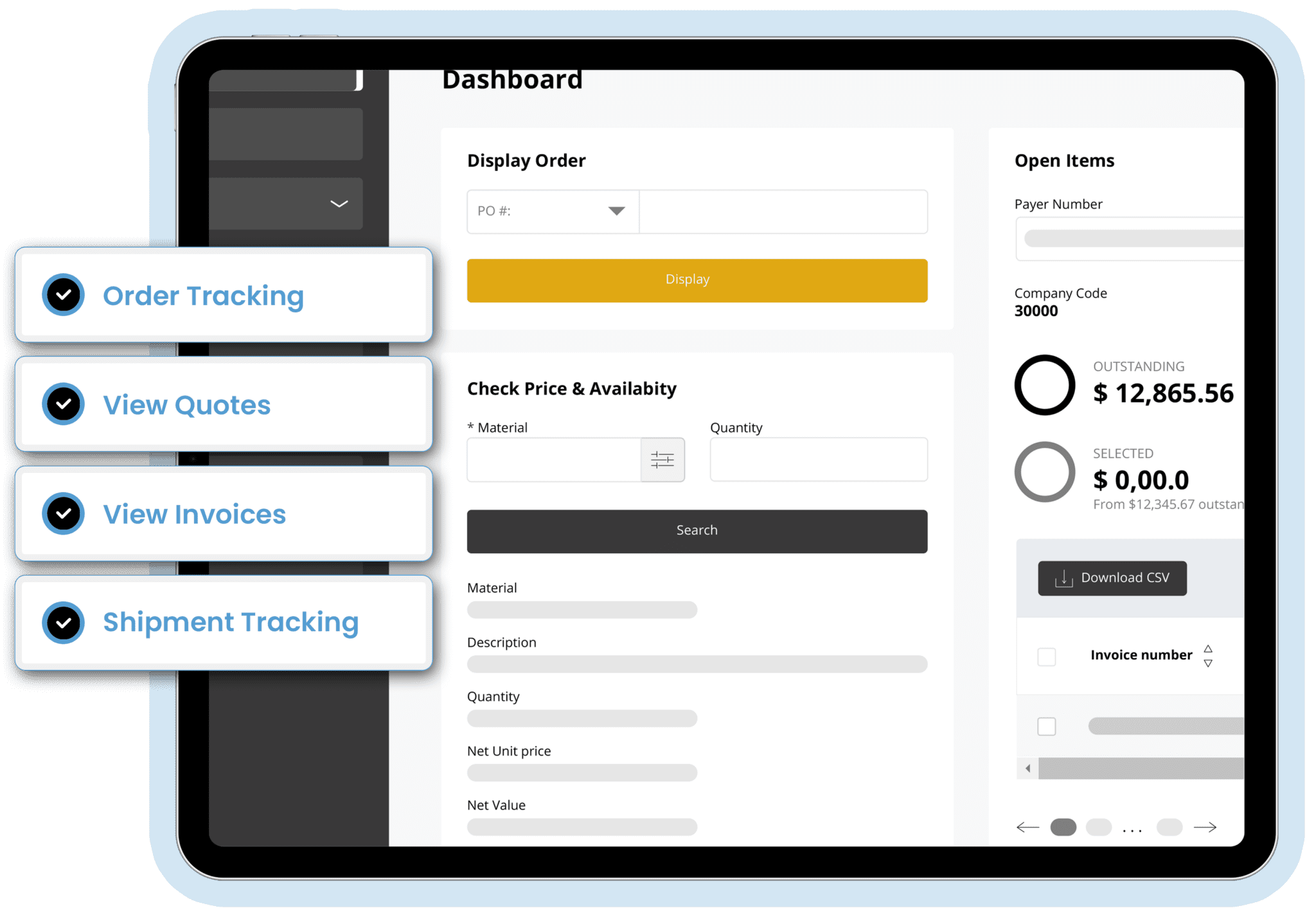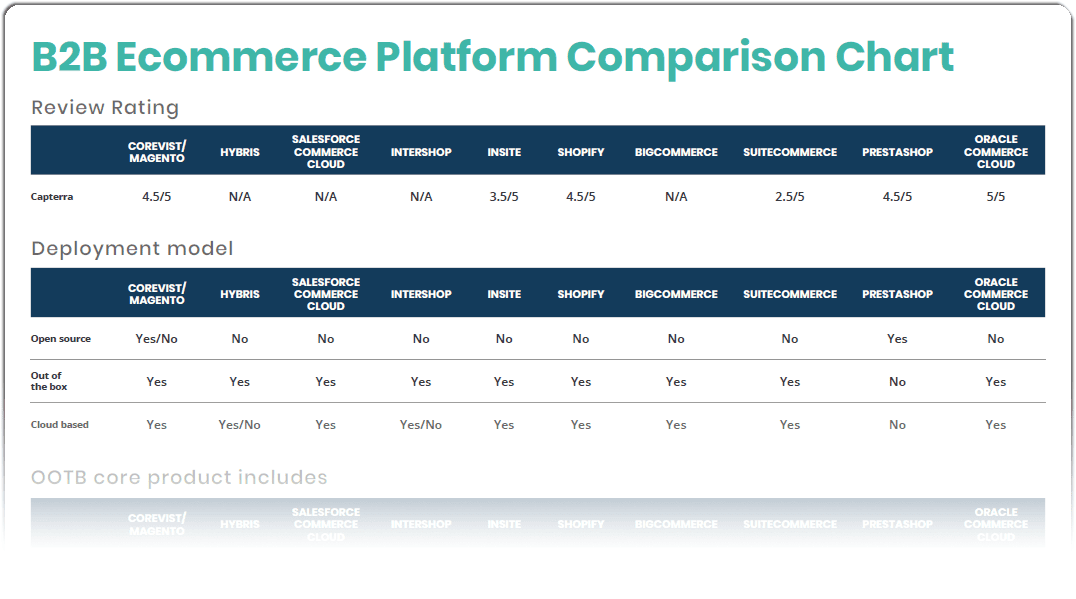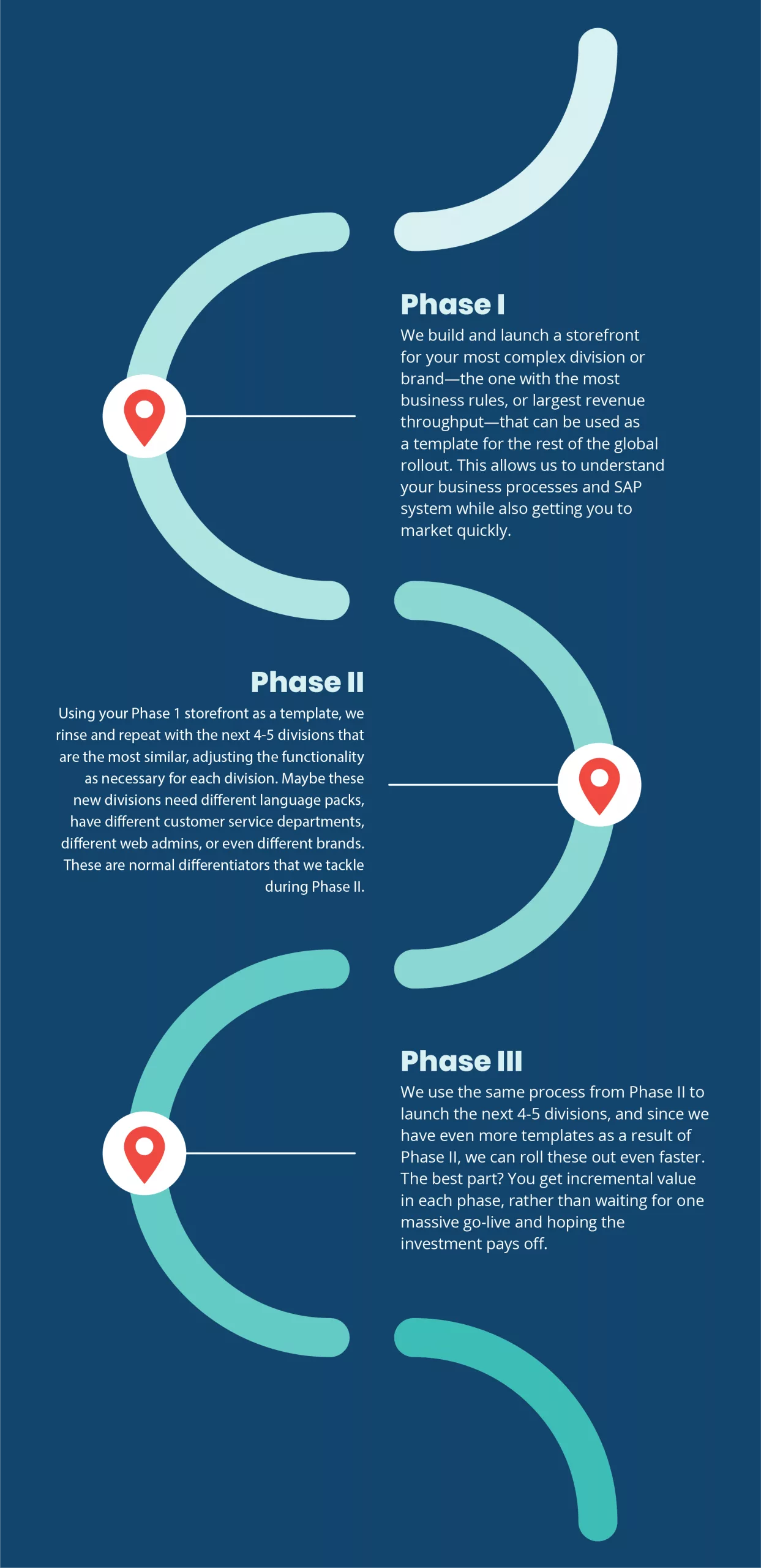B2B2C Ecommerce Examples

B2B2C Ecommerce Examples

B2B2C ecommerce can transform your business.
A B2B2C ecommerce platform gives you the chance to defend and grow market share directly with your end users, rather than depending on your distributors to market to them at the point of purchase.
Sounds like something every manufacturer should consider–but where do you start, especially if you’re doing SAP eCommerce?
In this article, we’ll give you 5 B2B2C ecommerce examples as a starting point for your project.
Click to jump:
B2B2C Example 1 – Manufacturer > Distr. > Cust.
B2B2C Example 2 – Sales Rep > Distr. > Cust.
B2B2C Example 3 – Manufacturer > Amazon > Cust.
B2B2C Example 4 – Manufacturer > Dealer > Cust.
B2B2C Example 5 – B2C App > Salesforce > B2B Ecom.
Best B2B2C Ecommerce Platforms
B2B2C Ecommerce Architecture
B2B2C Ecommerce Rollout Methodologies
B2B2C Example 1 – Manufacturer + Distributor + B2C Customer
In the world of SAP B2B eCommerce, this is the simplest example of B2B2C ecommerce. Here’s how it works. A manufacturer runs their own ecommerce store, offering their products in a catalog with rich content on the Corevist Platform (which includes prebuilt SAP integration). The end users (the C in B2B2C) place their orders through self-service with the SAP customer portal. With a real-time integration like Corevist’s, those orders post directly SAP in real time.
Sounds like the distributor is cut out, but that’s not true. In this scenario, the manufacturer outsources order fulfillment to the distributor.
In other words, the distributor receives an order notification when the order is placed. Rather than having inventory in stock which has been purchased by the manufacturer, the distributor may take this inventory into its warehouse on consignment. When an order is placed, the distributor ships it out and generates an invoice to the manufacturer. The manufacturer receives payment directly from the consumer and pays a distribution commission to the distributor.
This model works well for everyone involved:
- The manufacturer gets consumer contact information, which is critical if they ever decide to move entirely to a direct-to-consumer model.
- The distributor gets paid a smaller commission than the markup they would make if they purchased the products, but they also don’t shoulder as much risk because they didn’t purchase inventory and the manufacturer is the one who spent money generating brand awareness.
- The consumer gets the product they want just as fast as they would under a traditional distribution model.
This example is a great way for manufacturers to get their feet wet in reaching the consumer without upending their existing relationships with distributors.
B2B2C Example 2 – Manufacturer Sales Reps + Distributor + B2B Customer
Here’s another B2B2C ecommerce example: a manufacturer who sells to healthcare providers through a distributor, but who also has their own Sales team to drive business.
The problem: The healthcare provider must complete the purchase on the distributor’s ecommerce site. Sales reps can work accounts all day, but they can’t actually close a deal.
The solution: A B2B2C ecommerce platform that works for the manufacturer’s Sales team, the distributor, and the healthcare providers who purchase products.
When a manufacturer launches their own ecommerce store, they empower their Sales team to close deals. How? By providing ecommerce that’s available on any device, anywhere. Both Sales reps and healthcare providers can log in to the B2B2C ecommerce platform on a mobile device while the rep is in the field, closing a deal. A real-time integration to SAP maps each Sales rep against multiple sold-tos from SAP. That way, reps can place orders on behalf of their customers—or customers can place the orders themselves. Both parties do so from within a B2B2C ecommerce solution that’s customized to fit their differing roles.
Where’s the distributor in all this? Like in our first example of B2B2C ecommerce, the distributor sells product on consignment and gets commission. Order information originates in the manufacturer’s ecommerce store and is posted to the manufacturer’s SAP system. The distributor has their own login to the Magento B2B2C store and can see the relevant information for fulfilling the order. But the order data stays with the manufacturer, bringing them closer to the end user of their products.
This ensures that the manufacturer’s hardworking Sales team gets credit for their work. By eliminating the distributor’s opportunity to substitute a competitor’s product, this B2B2C solution also ensures that the healthcare provider won’t buy a competing product after the Sales team has invested their time.
B2B2C Example 3 – Manufacturer + Amazon + B2B or B2C Customer
Our next B2B2C ecommerce example involves Amazon, the elephant in the room when it comes to omnichannel ecommerce.
The problem: The manufacturer ships product to Amazon, who ships it to the end user. Distributors also sell the same product on Amazon. The manufacturer has lost control of their brand.
The solution: Omnichannel, SAP-integrated ecommerce that also integrates to Amazon.
This solution allows the manufacturer to maintain distributor relationships but reclaim their Amazon presence by selling direct. With the integration between Amazon, their own ecommerce store, and SAP, the manufacturer gets closer to the end user of their product by selling alongside distributors.
This prevents the substitution of competitors’ products if Amazon or the distributor is out of stock. It’s a crucial move for manufacturers who must sell on Amazon or perish.
B2B2C Example 4 – Manufacturer + Brick & Mortar Dealer + B2C Customer
This B2B2C example works great for manufacturers who sell to B2C dealers. It simplifies the buying process for everyone involved, and it ensures that the manufacturer gets customer information.
Rather than selling product to dealers through traditional channels and losing visibility into the customer interaction, the manufacturer can set up their own B2B2C ecommerce platform as the sole channel for dealers to get their products. When a customer comes into the dealer’s brick & mortar store, a dealer employee completes the sale in person, on the manufacturer’s ecommerce site.
Now the dealer gets their share of the sale, while the manufacturer controls the terms and gets total visibility into the customer’s information. If the manufacturer ever finds themselves taking over for a dealer who’s gone out of business, they’re in a great position to reach that same customer segment themselves.
B2B2C Example 5 – B2C App + Salesforce Integration + Manufacturer Ecommerce
This B2B2C example is fascinating. A manufacturer of paints needed a way to capture a greater share of the consumer market while passing the actual paint job requests to qualified contractors. They developed an incredible synergistic model that works for everyone involved.
The manufacturer launched an easy-to-use mobile app for consumers. This serves as an entry point to the B2B2C sales process. In the app, the consumer creates a request for a contract paint job, including uploading pictures of object that needs to be painted—a fence, a car, and anything in between. The customer can select the paint colors for their job, and those colors map to an SKU in SAP.
When the consumer places the order, the app talks to Salesforce and SAP. It logs the opportunity in Salesforce, where an algorithm finds the nearest painting contractor and assigns the job to the contractor. When the contractor logs in to Salesforce, they can’t see the customer’s contact information until they accept the job.
From Salesforce, the contractor sends a quote to the customer, who receives it in the app. The customer accepts the quote and pays via credit card. The order posts instantly from the app to SAP through a real-time integration, with the customer’s color selection mapped to the appropriate paint SKU.
Since the painting contractor only gets the customer’s contact information after the order has posted to SAP, the contractor can only complete the job by using the manufacturer’s paint. This is only fair, since the manufacturer first took the order through the app. It’s an ingenious way to work with contractors, reach consumers, and keep the sale.
Best B2B2C Ecommerce Platforms
How do you choose a platform for B2B2C? Admittedly, it’s a tall order. You need a solution that can span multiple market segments (and potentially integrate with multiple data sources).
While there’s no right answer here, you can use our ecommerce platform chart to compare your options and make a decision that’s right for your business.

B2B2C Ecommerce Architecture: How Do You Meet the Needs of All Audience Segments?
B2B2C ecommerce has to cover a lot of ground. In the case of complex market relationships, you should look for solutions that can adapt and scale to meet the needs of different market segments without a lot of duplicate effort.
One way to do this is with a flexible solution architecture that reuses some components while offering different front-end experiences for different audiences.
B2B2C Ecommerce Rollout: How to Handle Multiple Geographies
What do you do if you need multiple geographies for your B2B2C ecommerce solution—for example, 10 stores around the globe?
Check out this diagram for best practices when it comes to B2B2C ecommerce rollouts.


